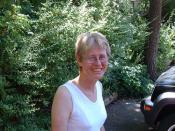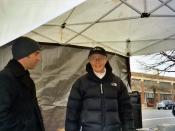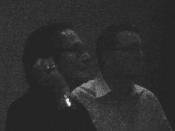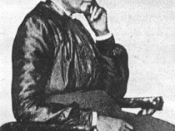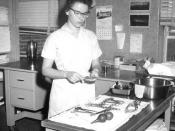Mary Ellen Rudin's life is a fascinating example of how quickly expectations can change in the course of one generation. Her story illustrates how some major shifts in thinking have taken place in woman's vision of themselves, their work and families.
She was born in Hillsboro, Texas on December 2, 1924. Her family moved to Leakey, Taxes in 1930 where she grew up in a very simple environment, witch might have contributed to her confidence and creativity. The little town lay at the end of a fifty-mile dirt road. The school was the center of activity in town. Children in town rode to school on horseback. There were few toys to play with. Homes were rustic and only a few had running water. Mary Ellen was left to do things on her own most of the time. She used her time just to think. She also invented games to play and used her imagination to keep busy.
Both of her parents came from middle-class families. Her father was a civil engineer with a degree from the University of Texas. Her mother graduated with a Bachelors of Arts degree and taught high school English. Her father moved to Leakey, Texas because he had been hired to rebuild the long dirt road. However, because of the Great Depression, funds were never allocated to complete the work.
Mary Ellen's parents set high expectations for her. She was encouraged to do what interested her as long as she could support herself doing it. They instilled in her a sense of self-work and confidence.
She had many interests in high school and had not anticipated becoming a mathematician. Her father and others advised her to sign up for a liberal arts program when she attended college. However, she got to registration she became overwhelmed. There was large number of people in the liberal arts line and only a few in the mathematics line. She decided to investigate and registered for a class in mathematics department. The man assisting her asked her many questions in logic and helped her choose her classes. He was R. L. Moore, well known for his research and teaching methods. His confidence in her and his style of teaching helped build her confidence. He persuaded her to go on to graduate school under his supervision at the University of Texas. Professor Moore also helped Mary Ellen get her first job at DUKE University where she taught math until 1953. While there she met her husband, Walter Rudin. He also became a mathematician and moved to Rochester, New York where he was offered a job on the faculty of the University of Rochester. Mary Ellen was soon given the opportunity to teach a calculus class. She taught part time and raised four children. When her children were grown she returned to full time work.
Along with teaching, Mary Ellen did and extensive amount of research. She developed a specialty in set-theoretic topology, which deals with sets and how they are related. During this time she wrote seventy papers and books on the subject. The titles included Concerning Abstract Spaces, Directed Sets which Converge, The shrinkable property, and Set-theoretic Constructions of Non-Shrinkable Open Covers. She had received three research grants from the National Science Foundation.
She is a member of the American Mathematical Society and the Association for woman in mathematics. She is also a member of many national boards and has given lectures throughout the country. She has won two major awards: The Prize of the Mathematical Society of the Netherlands and The Grace Chisholm Young Professorship at the University of Wisconsin.
Mary Ellen and her husband both became professors at the University of Wisconsin-Madison. Besides lecturing and writing, she was active in discovering and encouraging gifted young mathematicians in a statewide program. People traveled from all over the world to be a part of this exciting, supportive environment.
Throughout her life, Mary Ellen worked hard and never lost confidence in herself. She loved mathematics and she loved raising her family. She was able to integrate these different roles of her life smoothly and with great success.
Works Cited Henrion, Claudia. Women in Mathematics. Indianapolis: Indiana Press, 1997.
Fox, Lynn, ed., Brody, Linda, ed., Tobin, Dianne, ed. Woman and the Mathematical Mystique. Baltimore: Hopkins Press, 1976.
